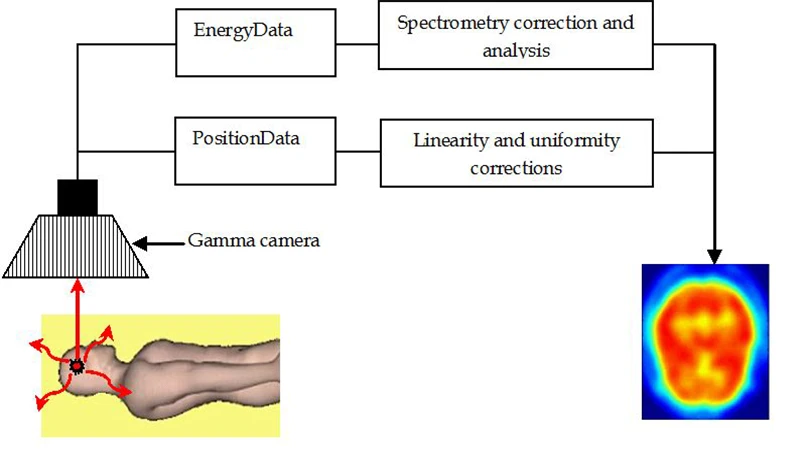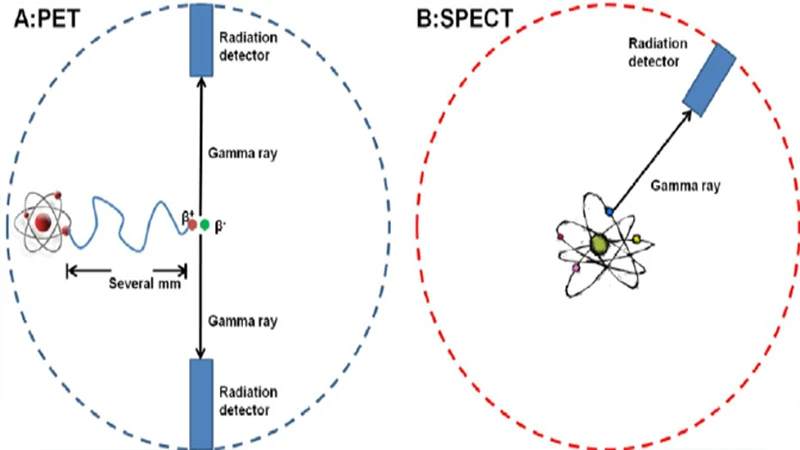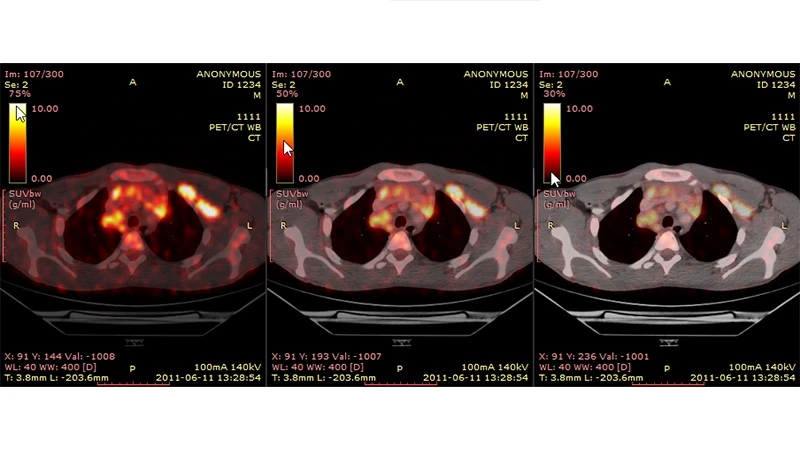Nuclear Medicine Explained: An Overview of PET and SPECT
Nuclear medicine is a unique branch of medical imaging that provides information about the function of organs and tissues, rather than their structure. While modalities like CT and MRI excel at showing anatomy, nuclear medicine excels at showing physiology. It reveals how the body is working on a cellular and molecular level.
The Core Principle: Imaging from the Inside Out
The fundamental difference in nuclear medicine is that the source of radiation is inside the patient. In an X-ray, radiation passes through the body to a detector. In nuclear medicine, a patient is given a small amount of a radioactive material, called a radiotracer or radiopharmaceutical. This tracer is designed to accumulate in a specific organ or type of tissue. A special camera, called a gamma camera, then detects the radiation (gamma rays) being emitted from the tracer within the patient to create an image.
The radiotracer is composed of two parts: a tracer molecule that is attracted to a specific biological process, and a radioactive isotope that emits gamma rays. For example, a sugar molecule can be tagged with an isotope to see where the body is using the most glucose—a common technique for finding cancer cells, which are highly metabolic.

Key Technologies: SPECT and PET
Two of the most common nuclear medicine imaging techniques are SPECT and PET.
- SPECT (Single-Photon Emission Computed Tomography): In SPECT, the gamma camera rotates around the patient, detecting single gamma rays emitted from the tracer. A computer then reconstructs these signals into 3D images. SPECT is commonly used for bone scans, cardiac stress tests, and brain imaging.
- PET (Positron Emission Tomography): PET is a more advanced and sensitive technique. The radioisotope used in PET emits positrons. When a positron collides with an electron in the body, they annihilate each other, producing two gamma rays that travel in opposite directions. The PET scanner is a ring of detectors that looks for these pairs of gamma rays arriving at the same time. This "coincidence detection" allows for a much more precise localization of the tracer, resulting in higher-resolution images.

PET/CT: Merging Function and Form
Modern scanners often combine PET and CT into a single hybrid machine (PET/CT). The patient undergoes both a PET scan and a CT scan in one session. The resulting images are then fused together by a computer. This provides the best of both worlds: the PET scan shows areas of high metabolic activity (the function), and the CT scan provides the detailed anatomical map (the form), allowing a radiologist to see exactly where the physiological activity is occurring.

Common Applications of Nuclear Medicine
- Oncology: Detecting cancer, determining if it has spread (metastasized), and monitoring the effectiveness of treatment. FDG-PET/CT, which uses a radioactive glucose analog, is a cornerstone of modern cancer imaging.
- Cardiology: Assessing blood flow to the heart muscle to diagnose coronary artery disease.
- Neurology: Evaluating brain disorders such as Alzheimer's disease, dementia, and seizures.
- Endocrinology: Imaging the thyroid gland to assess its function.
Conclusion: Visualizing Physiology
Nuclear medicine offers a profound look into the physiological processes of the human body. By using radiotracers to light up specific cellular activities, it allows physicians to diagnose diseases based on their functional characteristics, often long before structural changes become visible on other types of scans. This ability to visualize the body at work makes it a powerful and indispensable tool in modern diagnostics.


Comments